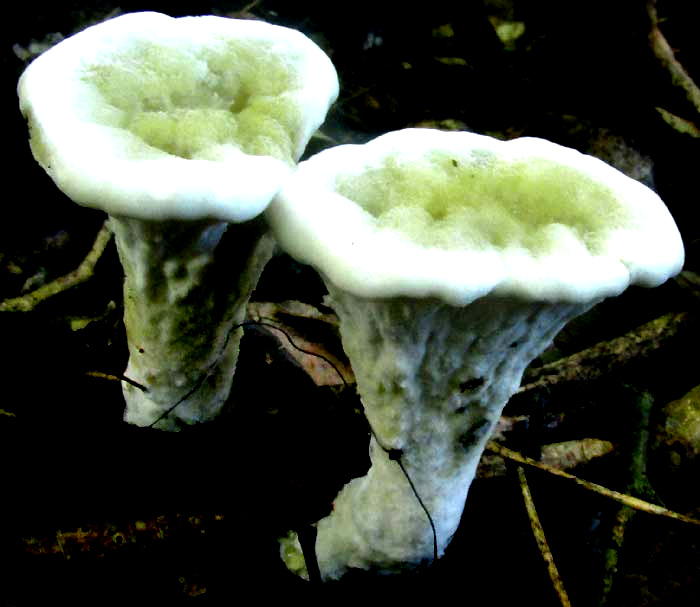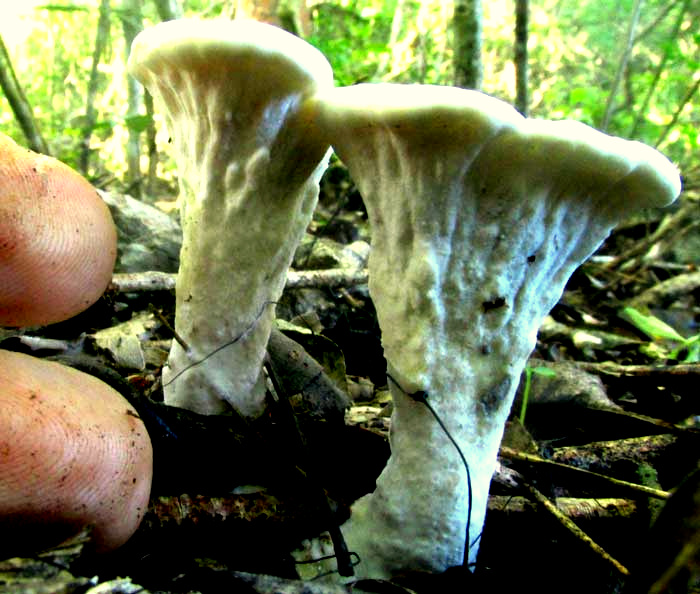Excerpts from Jim Conrad's
Naturalist Newsletter
Entry issued on November 29, 2019, from the forest just west of Tepakán; elev. ~9m (~30 ft), N21.053°, W89.052°; north-central Yucatán state, MÉXICO
BANKERACEAE
The morning after the last rain of our rainy seas -- when the ground was at its absolute peak of sogginess for the year -- the cauliflower-looking mushrooms shown below appeared along the trail through the rancho's regenerating woods:

Unlike many mushrooms, there were no spore-producing gills below their thick caps and, as my two fingers poking in from the side of the image indicate, the bodies were small:

*UPDATE: By 2024 I still couldn't identify this mushroom. However, when the above pictures were uploaded to iNaturalist.Org, user "boletusreticulatus" recognized a member of the small funus family the Bankeraceae. At this time I find no member of the Bankeraceae listed as documented in the Yucatan, though species of the genus Hydnellum, with some somewhat similar species, occur elsewhere in Mexico. This fungus remains a mystery.